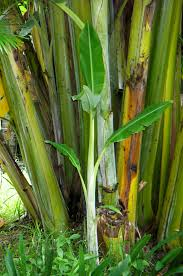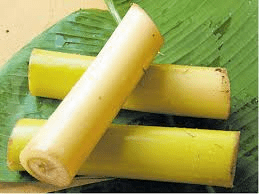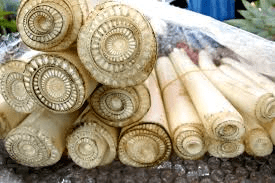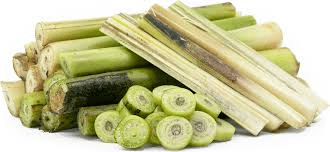Banana stems are an essential part of the banana plant, playing a crucial role in its structure, growth, and utility. Unlike typical tree trunks, banana stems are technically pseudostems, composed of tightly packed leaf sheaths that overlap and form a sturdy, cylindrical structure. These pseudostems can grow up to 12 feet in height, supporting the massive leaves and fruit clusters of the banana plant.
Structurally, the banana stem is a marvel of natural engineering. It is composed of layers of leaf sheaths that provide strength and flexibility, allowing the plant to withstand strong winds and heavy rainfall common in tropical climates. The stem’s interior contains a central core, which is soft and filled with a spongy tissue. This core is crucial for the transport of water and nutrients from the roots to the leaves and fruit.
Banana stems are rich in fiber, and their composition makes them an important resource in various applications. In agriculture, banana stems are often used as organic mulch and compost. The fibrous material breaks down slowly, enriching the soil with nutrients and improving its texture. This practice promotes sustainable farming by recycling plant waste and reducing the need for chemical fertilizers.
In the culinary world, banana stems are also utilized, particularly in South Asian cuisines. The inner core of the stem is edible and is considered a delicacy in many cultures. It is often used in salads, soups, and curries, providing a unique texture and flavor. The stem is rich in dietary fiber, vitamins, and minerals, making it a nutritious addition to the diet. Additionally, it is believed to have medicinal properties, such as aiding digestion and detoxification.
The fibrous nature of banana stems has led to their use in various non-food applications. The fibers can be extracted and processed to create a range of products, including paper, textiles, and ropes. Banana fiber is known for its strength and durability, making it suitable for crafting items that require robust material. In some regions, the fibers are woven into mats, baskets, and even clothing, showcasing the versatility of this natural resource.
Banana stems also play a significant role in traditional medicine. They are used in various remedies for their purported health benefits. For example, the juice extracted from the inner stem is believed to help in treating kidney stones and urinary tract infections. It is also used as a natural diuretic and to promote weight loss. While these uses are rooted in traditional practices, they highlight the potential health benefits of banana stems.
Environmental sustainability is another key aspect of banana stems. Their utilization in various applications reduces waste and promotes eco-friendly practices. The use of banana stem fibers in crafting and manufacturing helps in reducing reliance on synthetic materials and supports the development of sustainable products. Additionally, the incorporation of banana stems in agricultural practices contributes to soil health and reduces the environmental impact of farming.
Banana stems are a multifaceted component of the banana plant with a wide range of uses and benefits. From their structural role in supporting the plant to their applications in agriculture, cuisine, traditional medicine, and sustainable practices, banana stems exemplify the importance of utilizing natural resources efficiently. Their versatility and environmental benefits underscore the value of integrating such resources into various aspects of human life, promoting sustainability and health.
The Economic Importance and Uses of Banana Stems

1. Fiber Production: Banana stems are a rich source of natural fiber, which can be used to make textiles, ropes, and paper. For example, banana fiber is used to produce eco-friendly fabric for clothing.
2. Animal Feed: The stems are often chopped and used as feed for livestock such as cattle and goats, providing a nutritious supplement.
3. Biofuel: Banana stems can be processed into biofuel, helping to provide a renewable energy source.
4. Compost: The stems decompose easily and are used to make compost, enriching the soil with nutrients.
5. Mulch: Chopped banana stems are used as mulch to retain soil moisture and improve soil health in agricultural fields.
6. Handicrafts: The fibers from banana stems are used to make various handicrafts, including baskets and mats.
7. Paper Production: Banana stems can be pulped to produce eco-friendly paper products.
8. Edible Stems: In some cultures, the inner part of the banana stem is eaten. It is used in dishes like curries and salads, especially in South Indian cuisine.
9. Natural Dye: Extracts from banana stems can be used to produce natural dyes for coloring fabrics and other materials.
10. Medicine: Banana stems have medicinal properties and are used in traditional remedies to treat ailments like kidney stones and digestive issues.
11. Construction Material: In rural areas, banana stems are sometimes used as a construction material for temporary structures.
12. Biodegradable Plates and Bowls: Similar to banana leaves, the outer layers of banana stems can be processed into biodegradable plates and bowls.
13. Juice Production: The inner core of the banana stem can be juiced. Banana stem juice is believed to have various health benefits.
14. Fertilizer: The nutrient-rich remains of banana stems can be used as organic fertilizer in agriculture.
15. Mushroom Cultivation: Banana stems can be used as a substrate for growing mushrooms, offering a low-cost alternative to traditional methods.
16. Activated Carbon: Banana stems can be processed to create activated carbon, which is used in water purification and air filtration systems.
17. Packaging Material: The fibrous material from banana stems can be used to make biodegradable packaging materials, reducing reliance on plastic.
18. Decorative Items: The unique texture and appearance of banana stems make them suitable for creating decorative items like vases and ornaments.
Read Also: 3 Health Benefits of Slippery Elm (Ulmus fulva)
The Products and By-products That Can Be Derived From Banana Stems

1. Banana Fiber: Extracted from the stem, it is used to make textiles, ropes, and paper products. The process involves peeling the stem and processing the fibers.
2. Animal Feed: Chopped and processed stems are used as nutritious feed for livestock.
3. Biofuel: Banana stems can be processed into biofuel through anaerobic digestion or fermentation. This provides an alternative and renewable energy source.
4. Compost: Banana stems decompose rapidly and can be used to produce compost, enriching soil with nutrients. The process involves shredding the stems and mixing them with other organic waste.
5. Mulch: Chopped banana stems are spread around plants as mulch to retain soil moisture and improve soil health.
6. Handicrafts: The fibers from banana stems are crafted into various handicrafts like baskets, mats, and decorative items. The process includes extracting fibers and weaving them into products.
7. Paper Products: The fibers from banana stems can be pulped and processed into eco-friendly paper products. This involves a pulping process followed by paper-making techniques.
8. Edible Stems: The inner part of the banana stem is edible and used in culinary dishes such as curries and salads. Preparation involves peeling and slicing the inner core.
9. Natural Dye: Extracts from banana stems are used to produce natural dyes for textiles. The process involves boiling the stems and extracting the dye.
10. Traditional Medicine: Banana stems are used in traditional medicine to treat conditions like kidney stones and digestive problems. The inner core is often juiced or made into a paste.
11. Construction Material: Banana stems can be used as a construction material for temporary structures in rural areas. The stems are cut and used as poles or beams.
12. Biodegradable Plates and Bowls: The outer layers of banana stems can be molded into biodegradable plates and bowls, providing an eco-friendly alternative to plastic.
13. Juice Production: The inner core of the banana stem can be juiced. This juice is believed to have health benefits and is consumed in various cultures.
14. Fertilizer: The remains of banana stems can be composted and used as organic fertilizer in agriculture. This involves composting the stems and applying them to crops.
15. Mushroom Cultivation: Banana stems can be used as a substrate for growing mushrooms, offering a low-cost and sustainable cultivation method.
16. Activated Carbon: Banana stems can be processed into activated carbon, used in water purification and air filtration. This involves carbonizing the stems at high temperatures.
17. Packaging Material: The fibrous material from banana stems can be processed into biodegradable packaging materials, reducing the need for plastic. The process involves pulping and molding the fibers.
Read Also: 6 Health Benefits of Oregano (Origanum vulgare)
Frequently Asked Questions (FAQ’s) About Banana Stems

1. What are banana stems used for?
Banana stems are used for fiber production, animal feed, biofuel, compost, mulch, handicrafts, paper products, edible dishes, natural dye, traditional medicine, construction material, biodegradable plates and bowls, juice production, fertilizer, mushroom cultivation, activated carbon, and packaging material.
2. How do you extract fiber from banana stems?
To extract fiber from banana stems, peel the stem and separate the fibers manually or using a machine. The fibers can then be processed and used for various products.
3. Are banana stems edible?
Yes, the inner core of banana stems is edible and used in various culinary dishes, especially in South Indian cuisine.
4. How do you make compost from banana stems?
To make compost from banana stems, chop the stems into small pieces and mix them with other organic waste. Allow the mixture to decompose over time, turning it occasionally to aerate.
5. What health benefits do banana stem juice have?
Banana stem juice is believed to aid in digestion, reduce kidney stones, and detoxify the body. It is rich in fiber and other nutrients.
6. Can banana stems be used in traditional medicine?
Yes, banana stems are used in traditional medicine to treat ailments such as kidney stones and digestive issues.
7. How are banana stems used in mushroom cultivation?
Banana stems are chopped and used as a substrate for growing mushrooms. They provide a nutritious and sustainable growing medium.
8. What products can be made from banana stem fiber?
Banana stem fiber can be used to make textiles, ropes, paper products, handicrafts, and biodegradable packaging.
9. How are banana stems processed into biofuel?
Banana stems are processed into biofuel through anaerobic digestion or fermentation, producing biogas or ethanol as renewable energy sources.
10. Can banana stems be used as construction material?
Yes, in rural areas, banana stems are used as a construction material for temporary structures, providing a cost-effective solution.
Read Also: Practical Steps to Covert Paper Wastes into New Paper Products

